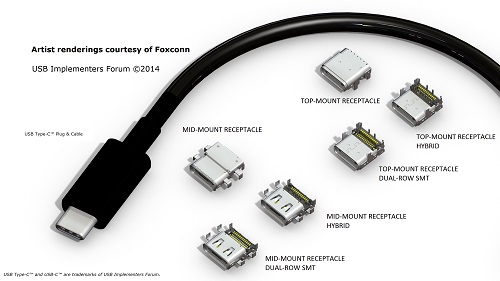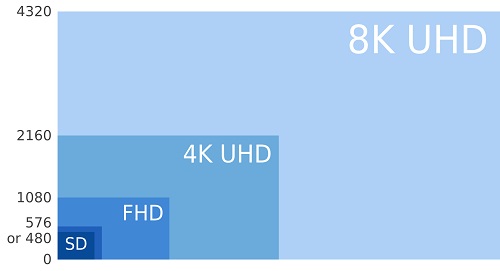Here at DeviceAtlas we follow all the latest smartphone news so that we can update our immense device database. We pay particular attention to new smartphone features and characteristics that may change the way we use mobile devices. Here is a quick round-up of some of the new features that may improve our devices in the near future.
USB-C connector
You may have heard of the USB-C connector that was touted as one of the innovations applied in the latest Macbook. In fact, the new Macbook is equipped with just one plug, the USB-C. It is possible that we will soon see USB-C in smartphones.
USB-C is the next iteration of the USB port. The big advantage of this connector is that it provides super-fast charging, data transfers and video output all in one port. Due to its miniature size, a regular USB-C port can be used in laptops, tablets, and smartphones, and the plug is also reversible making it easier to connect to your devices.
The OnePlus 2, the upcoming successor to the much hyped 'flagship-killer' was confirmed to become the first smartphone equipped with a USB-C port. Other future devices that may come with a USB-C include the likes of Samsung Galaxy Note 5, and iPhone 6S/7.

Photo: USB.org
5G connectivity
Taking the limited availability of 4G/LTE networks into consideration, we probably won't get the ‘5G’ icon on our phone’s status bar any time soon. But 5G seems to be an inevitable improvement to wireless connectivity that will happen in not so distant future.
5G will see download speeds increase from today's 4G maximum of 150mbps (300mbps for LTE-Advanced) to at least 10gbps. Also, 5G will shorten the lag time before the download process starts. The delay will reportedly drop to just 1 millisecond. These extreme speeds will open new doors for innovation, such as augmented reality, virtual reality, self-driving cars, more connected devices, etc. We’ve previously covered the growing list of web-enabled devices in this article.
Given that 5G networks won’t be around until at least 2020, there aren’t any 5G-capable devices available yet. However, some companies have already started trialling super-fast wireless connectivity, such as Ericsson who has recently tested a 5G prototype device in Sweden.
4K screen resolution
Some of the latest smartphone releases have featured an impressive Quad HD screen resolution which translates to 2560x1440 pixels (also known as 1440p). That’s a significant step forward in comparison to the other high-end standard, the Full HD featuring 1920x1080 pixels (1080p). Thus perhaps 4K (UHD) resolution displaying 3840x2160 pixels (2160p) will be the next in line, and 4K smartphones will soon hit the shelves.

Photo: Wikipedia.org
This was made possible some time ago, given that Sharp unveiled its ‘world’s first’ 4K smartphone screen back in 2013. Although so far there hasn’t been any smartphone maker that would tap into the 4K world, the Chinese manufacturer ZTE has been rumoured to offer a UHD screen in its ZTE Star 3 making it the world’s first 4K smartphone.
Of course there are some concerns whether the human eye would be able to even spot the difference between 4K and 2K (or even Full HD). Also, the battery may be drained much quicker when tasked with displaying so many dots on the screen.
And thus perhaps the 4K screen will join the many smartphone features that were somewhat promising but never really proved valuable for the user or were too technically difficult, pricey, or impractical to implement on a larger scale. These marketing gimmicks include, for instance, built-in projectors, 3D screens, flexible designs, modular designs, and many more.
Check out the latest DeviceAtlas statistics on the most popular smartphone screen resolutions in 2015.
Detect and target device characteristics
If you’re looking to provide your users with seamless experience, you need to be able to target their device features, and other characteristics.
DeviceAtlas allows you to target over 160 device properties, including the likes of marketing name, operating system, mobile browser, diagonal screen size, and many more, to make sure that the right content is sent to the right audience.
Sign up for a free DeviceAtlas account to try it now.




